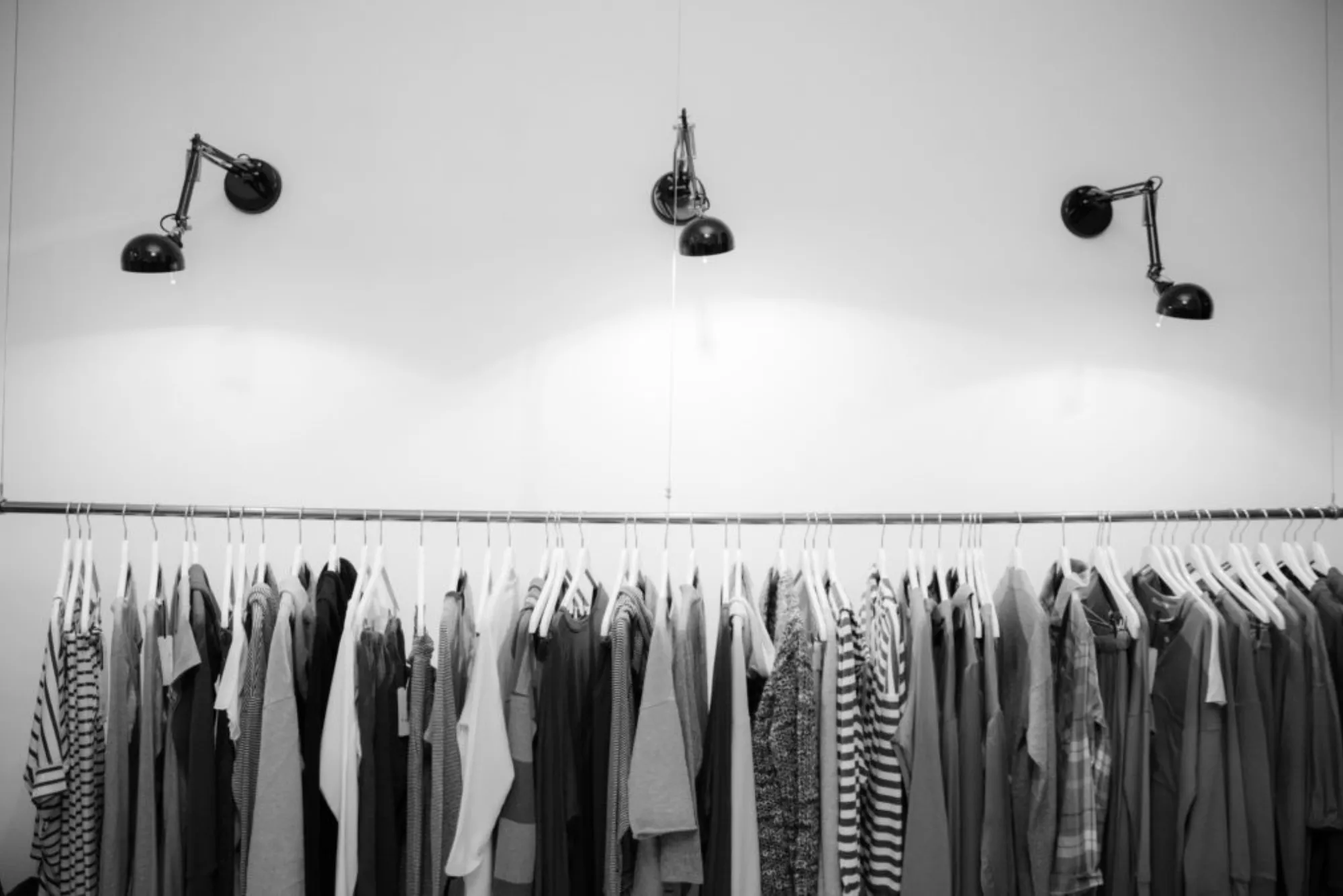The wholesale fashion industry serves as a critical linchpin in the global apparel market, seamlessly connecting manufacturers with retailers. In this dynamic sector, staying abreast of fashion trends is essential not only for meeting consumer demands but also for maintaining a competitive edge.
This comprehensive guide explores the historical evolution of wholesale fashion, dissects current and seasonal trends, examines the influence of technology, and discusses strategies for wholesalers to succeed.
Additionally, it delves into the growing importance of sustainability, regional variations, and methods for forecasting future trends, all while addressing the challenges faced by industry players.
Historical Perspective
The wholesale fashion industry has undergone transformative changes over the decades. Understanding its history is crucial for appreciating contemporary trends.
Early 20th Century to Post-War Era
In the early 20th century, the fashion industry was primarily driven by bespoke tailoring and couture houses. However, the post-World War II era marked a significant shift with the rise of mass production.
The introduction of synthetic fabrics and advances in manufacturing technology enabled the production of affordable, ready-to-wear clothing.
This period saw the birth of the wholesale fashion market as we know it, with wholesalers acting as intermediaries between manufacturers and retailers.
The Rise of Fast Fashion
The 1990s brought the advent of fast fashion, revolutionizing the wholesale industry. Brands like Zara and H&M pioneered the concept of rapidly producing runway-inspired designs at affordable prices.
This era emphasized quick turnaround times, trend-driven collections, and a high inventory turnover rate. Fast fashion not only democratized style but also set new standards for speed and responsiveness in the wholesale sector.

The Digital Revolution
The 21st century ushered in the digital revolution, fundamentally altering the wholesale fashion landscape. E-commerce platforms and online marketplaces emerged, expanding the reach of wholesalers to a global audience.
Digital tools and technologies facilitated more efficient supply chain management, data analytics, and trend forecasting, enabling wholesalers to operate with unprecedented precision and agility.
Current Trends in Wholesale Fashion
Today’s wholesale fashion scene is characterized by a harmonious blend of classic styles and contemporary innovations. Understanding these trends is crucial for wholesalers to align their offerings with consumer preferences.
Popular Fabrics and Materials
Sustainability is a significant driver in today’s fabric choices. Organic cotton, recycled polyester, and biodegradable materials are gaining popularity.
Additionally, innovative fabrics like Tencel, made from wood pulp, and Piñatex, derived from pineapple leaves, are becoming mainstream. These materials not only meet the growing demand for eco-friendly options but also offer unique textures and qualities.
Trending Colors and Patterns
Color trends in fashion are often influenced by organizations like Pantone, which annually release a “Color of the Year.” Recent years have seen a preference for bold, vibrant hues such as coral and classic blue, as well as soothing tones like pastel pink and sage green.
Patterns are also cyclical, with retro prints, animal motifs, and geometric designs frequently making comebacks.
Must-Have Clothing Items and Accessories
Certain clothing items and accessories have emerged as staples in contemporary fashion. Oversized blazers, high-waisted jeans, and midi dresses are perennial favorites.
Accessories like chunky sneakers, statement earrings, and crossbody bags are also in high demand. These items often gain popularity through the influence of celebrities and social media influencers, who set and amplify trends.
Seasonal Trends
Fashion is inherently seasonal, with distinct trends emerging for different times of the year. Wholesalers must anticipate and adapt to these changes to meet retailer needs.
Spring/Summer Trends
Spring and summer collections typically emphasize lightweight fabrics, bright colors, and playful patterns. Floral prints, pastel hues, and airy materials like linen and cotton dominate these seasons.
Key items include sundresses, shorts, and swimwear. Accessories such as sunglasses, hats, and sandals are also crucial for completing summer looks.
Fall/Winter Trends
Fall and winter collections focus on warmth and comfort, featuring heavier fabrics like wool, cashmere, and leather. Darker colors such as burgundy, navy, and forest green are prevalent, often complemented by rich textures and layers.
Essential items include coats, sweaters, and boots, while accessories like scarves, gloves, and beanies play a significant role in winter wardrobes.
Transitional Seasons
Transitional seasons, such as pre-fall and resort collections, have also gained importance. These mini-seasons offer retailers the opportunity to refresh their inventories with versatile pieces that bridge the gap between major collections.
Transitional items often include lightweight jackets, layered tops, and versatile dresses that can be adapted to varying weather conditions.
Impact of Technology
Technology has profoundly impacted the wholesale fashion industry, enhancing efficiency and opening new avenues for growth.
E-Commerce and Online Marketplaces
The rise of e-commerce has transformed how wholesalers operate. Online platforms like Alibaba, Amazon, and specialized fashion marketplaces have expanded the reach of wholesalers, allowing them to connect with retailers globally.
E-commerce provides convenience, broader market access, and valuable data insights that help wholesalers tailor their offerings.
Social Media Influence
Social media platforms such as Instagram, TikTok, and Pinterest are powerful tools for trendsetting and marketing. Influencers and fashion bloggers play a pivotal role in shaping consumer preferences.
Wholesalers can leverage these platforms to showcase their products, engage with audiences, and monitor emerging trends in real time.
Technological Advancements in Production
Advances in technology have also improved garment production. Techniques such as 3D knitting, laser cutting, and digital printing allow for more precise and efficient manufacturing.
These innovations reduce waste, lower production costs, and enable customization, providing wholesalers with a competitive edge.
Sustainable and Ethical Fashion
The demand for sustainable and ethical fashion is growing, driven by increasing consumer awareness of environmental and social issues.

Eco-Friendly Materials and Practices
Consumers are prioritizing eco-friendly materials such as organic cotton, bamboo, and recycled synthetics. Wholesalers are responding by incorporating these materials into their product lines.
Sustainable practices, such as water-efficient dyeing processes and zero-waste manufacturing, are also becoming standard in the industry.
Ethical Sourcing and Fair Trade
Ethical sourcing ensures that products are made in safe, fair working conditions. Wholesalers are increasingly transparent about their supply chains, partnering with manufacturers that adhere to ethical labor practices.
Fair trade certifications and initiatives further enhance the credibility of brands committed to social responsibility.
Circular Fashion
The concept of circular fashion, which promotes recycling and upcycling, is gaining traction. Wholesalers are exploring ways to extend the life cycle of clothing through initiatives such as take-back programs and collaborations with recycling firms. This approach not only reduces waste but also appeals to eco-conscious consumers.
Regional Variations
Fashion trends are not monolithic; they vary significantly across different regions due to cultural, climatic, and economic factors.
Cultural Influences
Cultural heritage and traditions heavily influence regional fashion trends. For example, intricate embroidery and vibrant colors are prominent in South Asian fashion, while minimalist designs and neutral tones are favored in Scandinavian countries. Wholesalers must understand these cultural nuances to effectively cater to diverse markets.
Climate Considerations
Climate plays a crucial role in shaping fashion preferences. In tropical regions, lightweight, breathable fabrics and bright, bold colors are popular.
In contrast, colder climates demand heavier materials and layered clothing. Wholesalers must tailor their product offerings to suit the specific climatic conditions of their target markets.
Economic Factors
Economic conditions also impact fashion trends. In affluent regions, consumers may prioritize luxury and high-end brands, while in emerging markets, affordability and value for money are key considerations.
Wholesalers need to adapt their strategies to align with the purchasing power and preferences of different regions.
Forecasting Future Trends
Accurate trend forecasting is essential for wholesalers to stay ahead of the competition and meet future demand.
Methods of Trend Forecasting
Trend forecasting involves a combination of qualitative and quantitative methods. Analysts study data from fashion shows, street style, social media, and consumer behavior to identify emerging patterns.
Advanced analytics and AI tools also play a role in predicting future trends based on historical data and market analysis.
Fashion Shows and Expos
Fashion shows and expos are critical events for spotting upcoming trends. Major events like New York Fashion Week, Paris Fashion Week, and Pitti Uomo provide a platform for designers to showcase their latest collections.
Wholesalers attend these events to gain insights into future trends and establish connections with designers and retailers.
Expert Insights and Industry Predictions
Industry experts and trend forecasting agencies, such as WGSN and Trendstop, offer valuable predictions and reports.
These insights help wholesalers make informed decisions about inventory, product development, and marketing strategies. Staying updated with expert analysis ensures that wholesalers can anticipate and capitalize on new trends.
Strategies for Wholesalers
Successful wholesalers employ various strategies to navigate the competitive landscape and maximize their potential.
Identifying and Capitalizing on Trends
Wholesalers must continuously monitor fashion trends and be agile in their response. This involves keeping an eye on fashion shows, social media influencers, and consumer feedback.
Quickly identifying and stocking trending items allows wholesalers to meet retailer demands and stay relevant.
Effective Inventory Management
Efficient inventory management is crucial for minimizing costs and maximizing profitability. Wholesalers should implement inventory management systems that provide real-time data on stock levels, sales performance, and reorder points. This ensures that they can maintain optimal inventory levels and avoid overstock or stockouts.
Building Relationships with Retailers and Designers
Strong relationships with retailers and designers are vital for long-term success. Wholesalers should focus on building partnerships based on trust, reliability, and mutual benefit.
Case Studies
Examining successful wholesale fashion businesses provides valuable lessons. For instance, companies like Zara and H&M have mastered the art of fast fashion, quickly adapting to trends and efficiently managing their supply chains.
On the other hand, brands like Patagonia have built a loyal customer base by prioritizing sustainability and ethical practices. These case studies highlight diverse strategies that can lead to success in the wholesale fashion industry.
Challenges in the Wholesale Fashion Industry
Despite its opportunities, the wholesale fashion industry faces several challenges. Supply chain disruptions, often caused by geopolitical events or natural disasters, can lead to inventory shortages and delays.
Managing overstock and unsold inventory requires strategic planning and flexibility. Additionally, the market is highly competitive, with new players constantly emerging. Wholesalers must innovate and differentiate themselves to maintain their market position.
Staying updated with fashion trends is imperative for success in the wholesale fashion industry. By understanding historical trends, embracing current and seasonal styles, leveraging technology, and prioritizing sustainability, wholesalers can navigate this dynamic market effectively.
Adapting to regional variations, forecasting future trends, and implementing strategic practices are key to thriving in this competitive landscape. Ultimately, staying trend-aware and flexible will enable wholesalers to meet the ever-evolving demands of the fashion industry.




